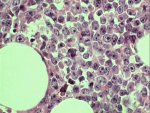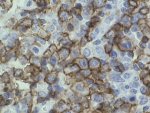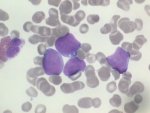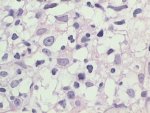 |
 |
 |
Bone marrow trephine biopsy stained by Haematoxylin & Eosin |
CD20 immunoperoxidase stain of lymph node section |
Peripheral blood slide showing DLBCL cells |
 |
 |
Lymph node section - H & E staining. |
Peripheral blood slide showing DLBCL cells |
Comments & feedback to: admin@hmds.org.uk